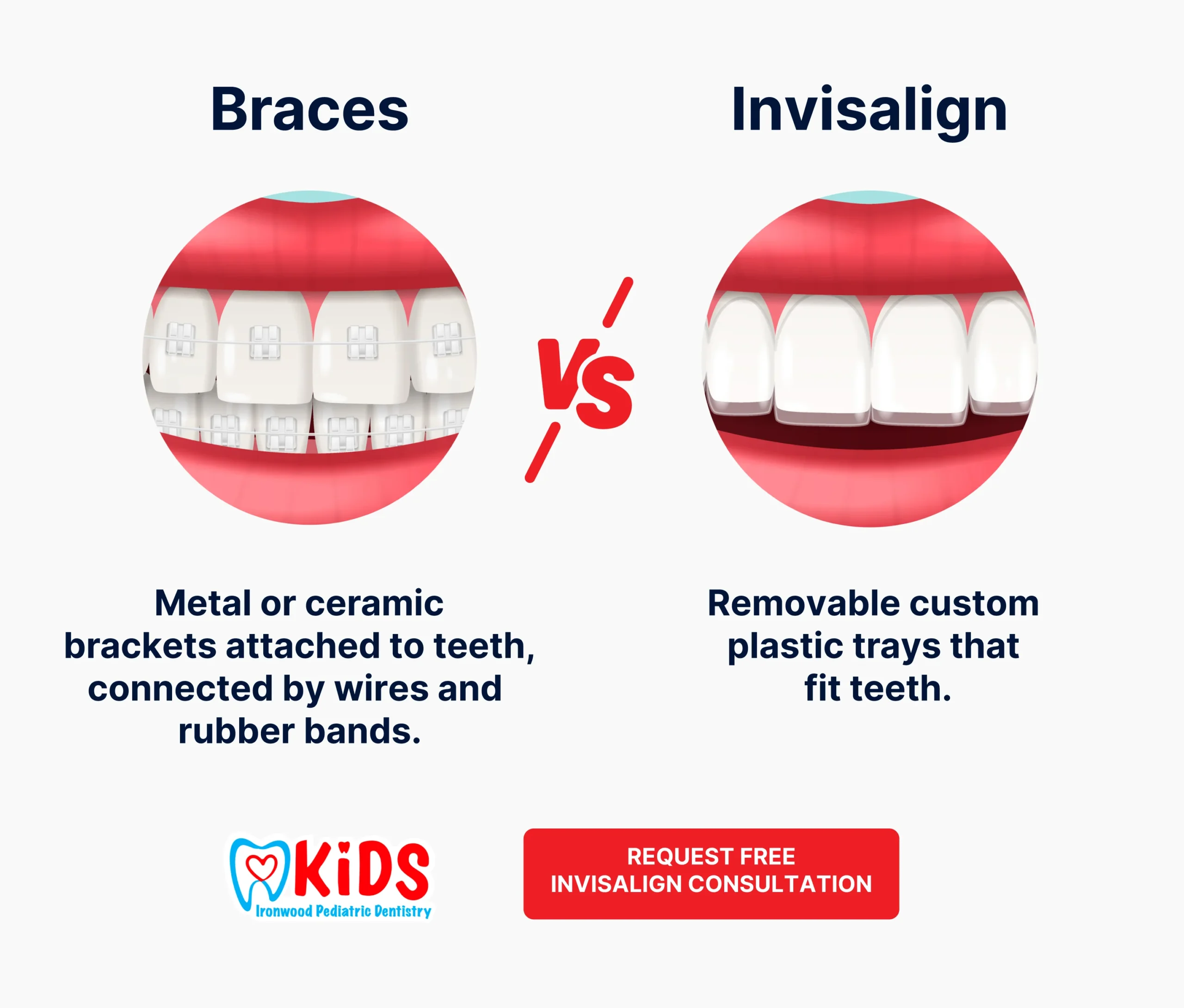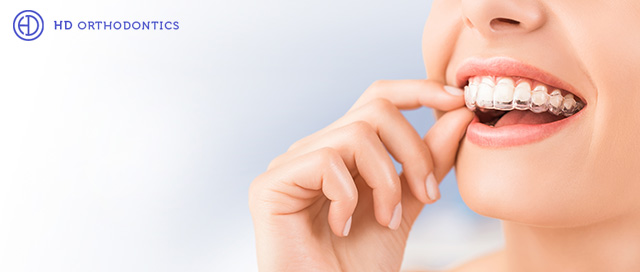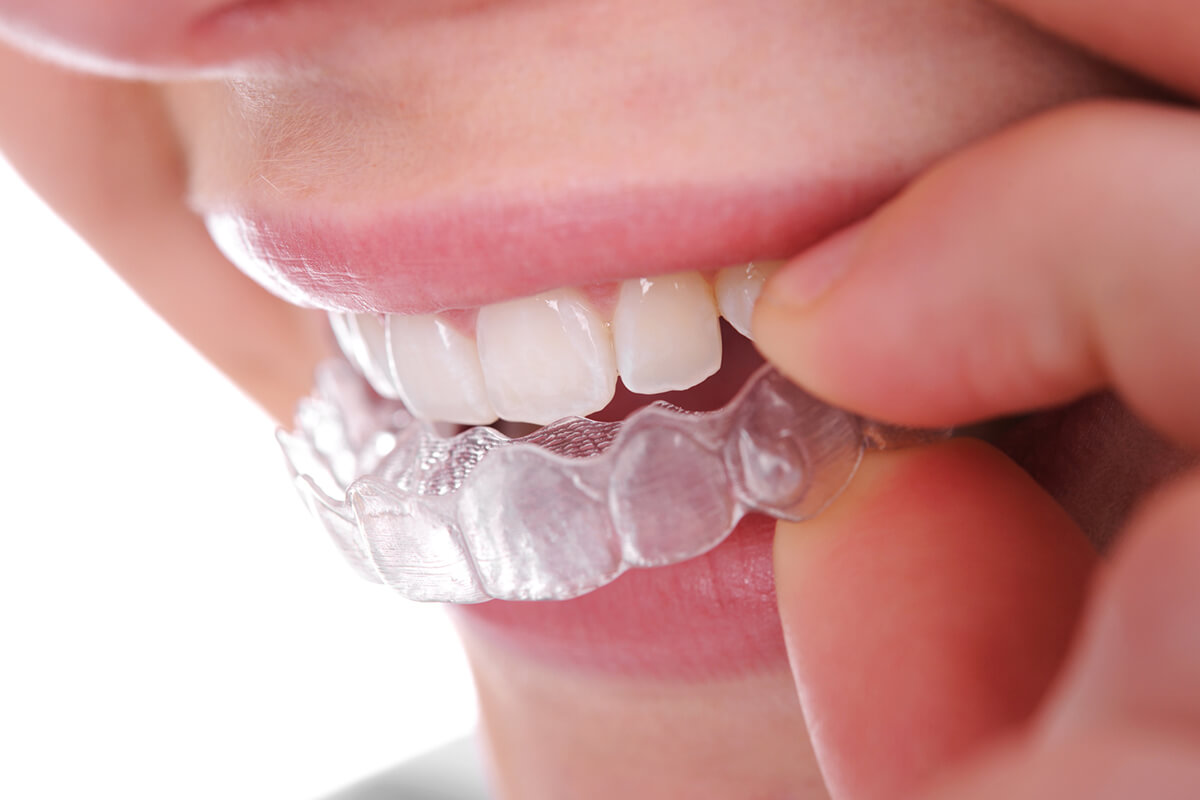How Invisalign Functions: Your Overview to Clear Aligners and Their Effectiveness
Wiki Article
Invisalign vs. Typical Dental braces: Which Alternative Is Right for You?
When considering orthodontic treatment, the option between Invisalign and conventional dental braces provides several essential factors that merit cautious assessment. Invisalign provides a discreet option with removable aligners, while typical dental braces give a more visible yet efficient solution for extreme misalignment.Overview of Therapy Options

On the other hand, conventional braces consist of steel brackets and cords that are adhered to the teeth. This technique uses continuous stress over time to accomplish positioning. While reliable for complicated orthodontic concerns, traditional braces need regular check outs for changes and can pose challenges in preserving dental hygiene as a result of the difficulty of cleansing about brackets and cables.
Both options have their benefits, and the selection commonly rests on specific oral problems, way of life choices, and patient conformity. Eventually, seeking advice from an orthodontic professional is critical for identifying the most ideal therapy plan customized to individual needs. Understanding the nuances of each choice can dramatically influence the total success of orthodontic therapy.
Aesthetic Factors To Consider
A substantial element affecting the selection between Invisalign and typical dental braces is the visual charm each treatment supplies. Invisalign aligners are crafted from clear plastic, making them essentially unnoticeable when put on.In comparison, traditional dental braces consist of steel brackets and cords, which can be a lot more noticeable. While innovations in orthodontic technology have actually led to the growth of smaller braces and tinted elastics, traditional dental braces still maintain an even more conspicuous profile. For some people, the visibility of braces might discourage them from looking for necessary therapy.
Inevitably, the option in between Invisalign and typical braces might depend upon personal choices regarding aesthetics. Patients who focus on discernment frequently favor Invisalign, while those that are less concerned about presence might go with standard dental braces. Understanding the aesthetic implications of each choice is critical for making an informed decision that lines up with one's way of living and choices.
Comfort and Convenience

In terms of benefit, Invisalign aligners are removable, enabling clients to appreciate their preferred foods without restriction and maintain optimal oral health. Cleaning and flossing are streamlined, as the aligners can be secured throughout these regimens, whereas typical dental braces call for cautious steering around brackets and cables.
In comparison, traditional dental braces necessitate normal changes, making them less practical for those with busy schedules. On the whole, the convenience and ease of Invisalign make it an appealing choice for many individuals looking for orthodontic therapy.
Therapy Duration and Performance
While both Invisalign and typical braces work in correcting dental misalignments, the duration of treatment can vary dramatically between the 2 options. Usually, Invisalign treatment can take anywhere from 12 to 18 months, depending on the complexity of the instance. The clear aligners function by progressively changing teeth right into their preferred placements, and regular follow-ups with an orthodontist help make sure progress stays on the right track.
In comparison, standard dental braces often require a longer dedication, generally ranging from 18 months to 3 years. This results from their set nature and the use of brackets and wires, which can be extra reliable for complicated situations and severe misalignments (Invisalign). The treatment effectiveness of typical braces is well-documented, as they permit accurate changes and greater control over tooth motion
Eventually, the option in between Invisalign and conventional dental braces may rest on both the expected therapy duration and the specific oral concerns available. Consulting with an orthodontist is essential, as they can give tailored suggestions based on private needs, visit this page making sure the picked approach straightens with wanted durations and outcomes.
Expense Comparison and Insurance Coverage Options
Price plays a substantial duty in the decision-making process for individuals thinking about orthodontic treatment, whether selecting Invisalign or standard dental braces. Typically, the cost of Invisalign varieties from $3,000 to $8,000, while typical dental braces normally set you back between $2,000 and $6,000. Factors influencing these expenses consist of the complexity of the case, the period of treatment, and geographical place.Insurance insurance coverage can significantly impact out-of-pocket costs. Several dental insurance coverage plans provide partial insurance coverage for orthodontic therapies, however the specifics can differ extensively. It is essential for people to evaluate their insurance coverage to determine the degree of insurance coverage for either option. Generally, typical braces might be a lot more frequently covered by insurance policy strategies compared to Invisalign, which some insurers classify as a cosmetic procedure.
Furthermore, a number of orthodontic methods use adaptable payment plans, making both therapy choices a lot more Read Full Report obtainable. Individuals should ask about possible financing alternatives and discounts for in advance repayments. Examining the total expense, including insurance coverage advantages and layaway plan, is necessary for making a notified choice that aligns with both aesthetic choices and spending plan considerations.

Verdict
In recap, the selection between Invisalign and traditional dental braces hinges on multiple factors, consisting of aesthetic choices, convenience, therapy period, and expense. Invisalign uses a discreet, removable alternative that facilitates oral health and nutritional flexibility, while conventional braces might be a lot more ideal for complex dental concerns and usually come with a reduced cost factor. Inevitably, examination with an orthodontist is important to analyze individual situations and determine the most proper treatment choice for accomplishing optimal oral placement.When considering orthodontic therapy, the option in between Invisalign and standard dental braces provides several important elements that warrant mindful analysis.Contrasting Invisalign and typical braces discloses unique therapy options for orthodontic improvement.While both Invisalign and conventional braces are efficient in fixing oral misalignments, the duration of therapy can vary dramatically in between the 2 options.Cost plays a substantial function in the decision-making process for people considering orthodontic treatment, whether deciding for Invisalign or conventional dental braces.In hop over to these guys recap, the choice in between Invisalign and conventional dental braces pivots on several elements, consisting of aesthetic preferences, comfort, therapy duration, and cost.
Report this wiki page